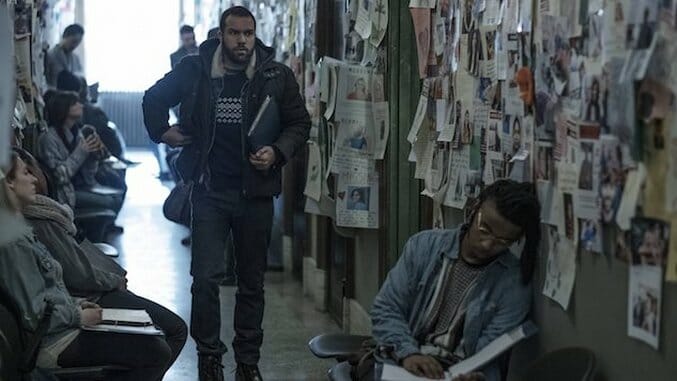The Handmaid’s Tale Goes Beyond Gilead, and Offers a Faint Glimmer of Hope
(Episode 1.07)
George Kraychyk/Hulu
One of the struggles that the creators of The Handmaid’s Tale were sure to run into before long was how to turn the compact source material of Margaret Atwood’s novel into something as big and stretched out as a TV series. It’s a challenge that’s only going to grow now that the show has been picked up for a second season.
So far, the writers and producers have padded things out nicely, adding the right amount of additional flair and back story to flesh out Atwood’s minimalist prose. Their biggest potential gamble came with this week’s installment, taking a diversion to track the fate of Luke (O.T. Fagbenle).
I could see a lot of other series slapping this storyline in early to present some glimmer of hope for viewers and counteract the otherwise bleak, forbidding nature of Offred’s current situation. By slotting it in towards the back third of this first season, The Handmaid’s Tale not only logically follows the storyline of our protagonist as she finds out that her husband is still alive and can get a message to him; it also allows us to sink more deeply into the world of Gilead before taking us out of it entirely for one hour.
-

-

-

-

-

-

-

-

-

-

-

-

-

-

-

-

-

-

-

-

-

-

-

-

-

-

-

-

-

-

-

-

-

-

-

-

-

-

-

-








































